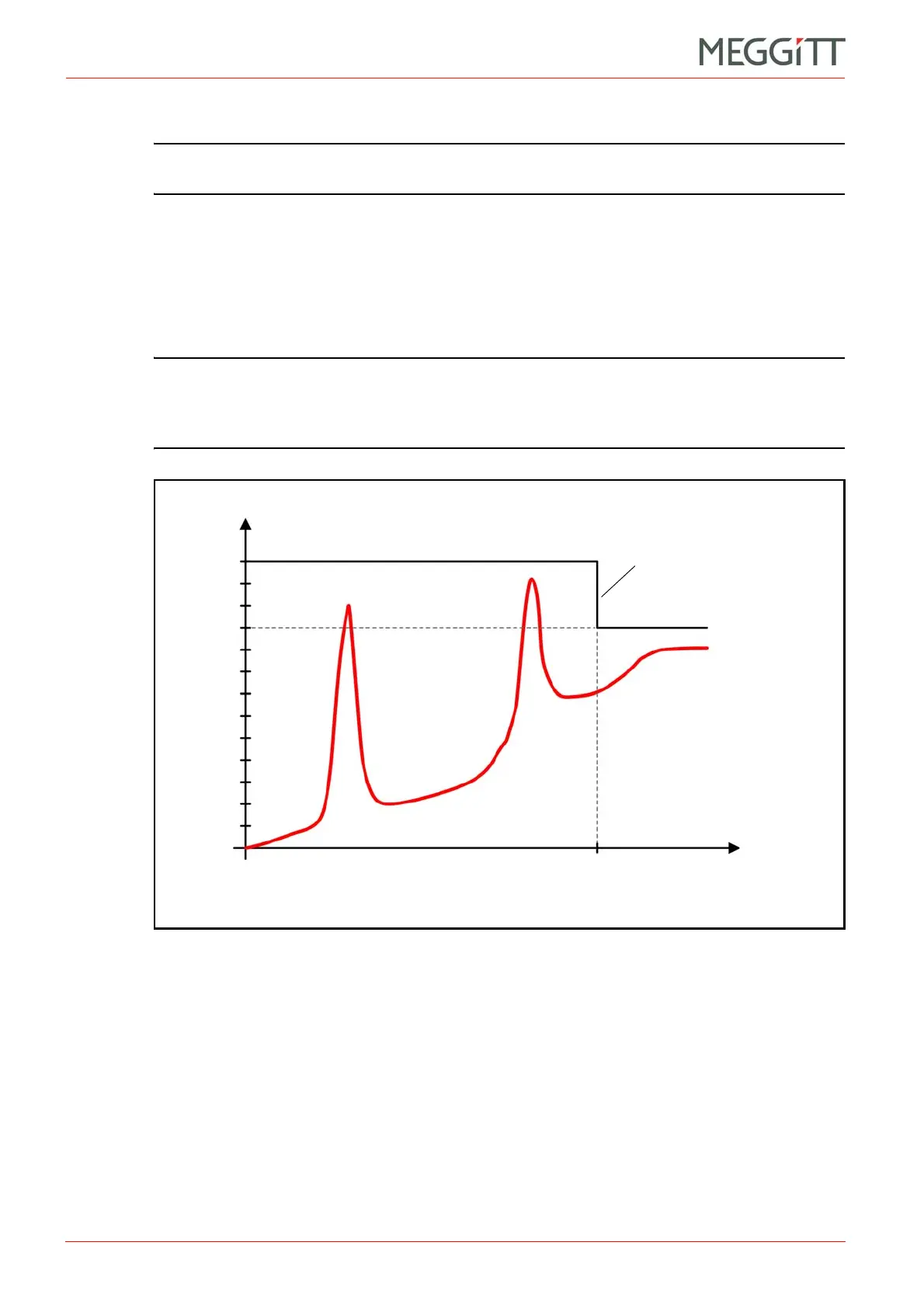4 - 20 VM600 MPS hardware manual (standard version) MAMPS-HW/E
Edition 17 - February 2018
Alarm monitoring
MPC4 / IOC4T CARD PAIR
4.6.4 Direct Trip Multiply
NOTE: The safety version of the MPC4 card (MPC4SIL) does not does not support the trip
multiply (TM) function.
This is a simplified version of adaptive monitoring. In this case there are only two different
level coefficients, one of which is 1.0. The other coefficient can be chosen in the range 0.1 to
5.0, in steps of 0.1. This is illustrated in Figure 4-9.
The level coefficient is switched by an external signal applied to the Trip Multiply (TM) input
on the IOC4T card. When this input is held low (0V), the scaling coefficient is effective. When
it is floating, a default scaling factor of 1.0 is used.
NOTE: The level coefficient is always applied to Danger+ and Alarm+ (high) levels.
The level coefficient is applied to Danger and Alarm (low) levels only when their
values are negative. When they are positive and the level coefficient is not equal
to 1.0, both Danger and Alarm are disabled.
In order to use the Trip Multiply function, it must first be activated using the VM600 MPSx
software (using the Adaptive Monitoring property sheet of the relevant Processed Output tab
for the appropriate Processing Channel node).
Figure 4-9: Illustration of direct Trip Multiply technique
Vibration level
Speed
Alarm level
s1
1.3
1.0
